2014 Mitsubishi Outlander Review – Video

It’s no secret that Mitsubishi isn’t doing so well in the North American market as of late. Looking to rebound they’re now attacking one of the largest and fastest growing vehicle segments, going straight for the sales jugular, with the new 2014 Outlander.
FAST FACTS
| 1. Power comes from a either a 166 hp 4-cylinder with 162 lb-ft of torque, or a V6 that puts out 224 hp and 215 lb-ft of torque. |
| 2. New for 2014, the Outlander gets forward collision mitigation, adaptive cruise control and lane keeping assist. |
| 3. Fuel economy is rated at 25/31/27 city/highway/combined for the FWD four-cylinder, while the V6 gets 20/28/23. |
| 4. A third row comes standard, and offers 28.2 inches of legroom and 35.7 inches of headroom. |
SLICK NEW LOOK, THOUGH LESS DRAMATIC
Left alone since 2007, for 2014 Mitsu has given its compact crossover a redesign to try and keep it relevant in an increasingly growing and competitive market flooded with new vehicles.
First off, the new look of the Outlander is heavily revised from its previous guise, the biggest change being the axing of the “shark nose” grille which has adorned many Mitsubishi products over the last few years. Overall, the design has taken on a slick look, which also contributes to better aerodynamics, with a drag coefficient of 0.33. The rear end does look a little disproportionate to the rest of the vehicle because of its wide haunches and long overhang, but it pulls together nicely in the back end with small, stylish taillights. A new beltline has been added to vehicle which gradually slopes up from the front to the rear, adding to the long, robust look of the Outlander.
A RARE V6 OPTION FOR THOSE WHO WANT IT
Two powerplants can be had in the Outlander, either a 2.4-liter four-cylinder that’s good for 166 hp and 162 lb-ft of torque, or a V6 that churns out 224 hp and 215 lb-ft of torque. While neither engine is new to the Outlander, the availability of a V6 is a big deal, as all of the Outlander’s major competitors have dropped their six-cylinder options, leaving the market full of naturally aspirated and turbocharged fours.
Get the Flash Player to see this player.
Mitsubishi only expects the take rate of the V6 to sit around 25 percent, but it is still an option that will no doubt draw some customers in from other brands – especially those disaffected RAV4 buyers who can no longer get a V6.
The only real challenger for what the V6 offers is a turbocharged four, particularly Ford’s EcoBoost. The 2.0-liter turbo that powers the Escape makes 270 lb-ft of torque, putting the outlander to shame when it comes to twist.
TWO TRANSMISSIONS, NEITHER IS IDEAL
A continuously variable transmission (CVT) is exclusively available paired to the four pot, while the V6 gets a six-speed automatic, available with paddle shifters. The V6 offers some great power, once it kicks in. While the engine is willing, the transmission is a little slow to kick down a gear to provide the most available torque. As for the four-cylinder, it is a typical CVT experience. Rubber band effect is prominent, and little torque is felt under hard acceleration, though on the positive side, sound deadening in the cabin does a great job of keeping the whiny CVT very quiet.
The trade off for the CVT of course is improved fuel economy. The four-cylinder CVT combo is rated at 25/31/27 city/highway/combined, while with S-AWC version is pegged at 24/29/26. Real world numbers tell the same story, as our time with the four-cylinder front-wheel drive Outlander returned a rating of 28 mpg. The trade off for that six-cylinder power of course is a lack of fuel economy, as the six-cylinder engine gets a 20/28/23 rating. To achieve better fuel numbers, Mitsubishi innovative valve timing electronic control (MIVEC) has been added to both engines.
The Outlander’s rack and pinion steering system has been replaced by a new electric setup, which provides a very smooth driving experience. Highway cruising is handled especially well, though feedback to the driver is quite vague; which means any hopes of extracting any fun from the Outlander in the twisties is dashed.
Off road, the lack of feedback actually goes a long way, as you don’t need to fight the steering wheel to keep the wheels on track, especially perfect for the compact crossover buyer who probably won’t be rock crawling anytime soon, but who might tackle dirt, gravel, or muddy roads.
4-CYLINDER GAINS S-AWC
Also new for 2014 is the pairing of Mitsubishi’s Super-All Wheel Control system with the four-cylinder engine, as it was previously only available with the V6. The system is lifted directly from the Lancer Evolution, where it has built something of a cult following. It gives the Outlander two electronically controlled differentials; one between the front wheels and one between the front and rear axle. S-AWC deliver lightning fast reactions times, with only a split second of wheel spin before power is re-routed to where it needs to be. The Outlander also now offers different all-wheel drive modes, including snow, lock, AWC Eco and Standard.
The inside of the new Outlander has been given the once over as well. New for 2014 is a six-inch touch screen, gloss black center stack surrounds, and a revised Rockford Fosgate 140-Watt Digital HD Radio. Simplicity abounds, giving the cabin a clean look, with no clutter to be found anywhere. It is a classic feeling dash layout, with no flair, except for wood or fake carbon fiber lookalike accents (depending on trim) pushed into the dash and doors.
The availability of a third row sets the Outlander apart from its competition, though the small jump seats in the back are really only meant for children or enemies, offering just 28.2 inches of legroom and 35.7 inches of headroom. Folding those rear seats flat into the floor is an easy affair, and once stowed, they are well hidden and offer no obstruction, along with 63.3 cubic ft. of total cargo room. With the third row up, only 10.3 cubic ft. of cargo room is available, though there is a small storage compartment in the floor that helps to stow away luggage.
SOME NEW TRICKS
Also new for 2014, Mitsubishi has introduced a segment exclusive collision-mitigation system along with adaptive cruise control. The collision mitigation operates through a series of radar sensors located in the bumper, that communicate with the brakes, which will deploy if needed. At speeds up to about 30 mph, the collision mitigation will bring the vehicle to a full stop if an accident is deemed unavoidable. The system waits until the last second to react, allowing the driver of the vehicles as much time as possible to handle the situation.
Sharing the same radars, the Outlander has adopted and adaptive cruise system, usually reserved for high-end automobiles, though the technology is beginning to trickle down into large volume cars. Easily the most impressive feature is the ability for the vehicle to come to a complete stop, without the need for driver intervention, so it will work in stop-and-go traffic. Three different following distances are available, all of which are generous in terms of following distance.
As of the date of publication, pricing for the 2014 Outlander has not been made public. Mitsubishi did say however that the starting price would stay close to the outgoing 2013 model, which starts at $22,695.
THE VERDICT
In an automotive segment that is growing like wildfire, it is easy to be left behind. Mitsubishi has managed to stake its claim in the market with the Outlander, with strong selling points not found on its competitors. The optional V6, adaptive cruise control, forward collision mitigation and S-AWC give the Outlander a leg up on the competition is some respects, opening the door for Mitsubishi to steal some prospective sales from the big boys, namely Toyota, Ford and Honda.
LOVE IT
- S-AWC reacts fast
- Adaptive cruise control
- Smooth drive
LEAVE IT
- Both transmissions
- Disproportionate rear end overhang

Stephen covers all of the day-to-day events of the industry as the News Editor at AutoGuide, along with being the AG truck expert. His truck knowledge comes from working long days on the woodlot with pickups and driving straight trucks professionally. When not at his desk, Steve can be found playing his bass or riding his snowmobile or Sea-Doo. Find Stephen on <A title="@Selmer07 on Twitter" href="http://www.twitter.com/selmer07">Twitter</A> and <A title="Stephen on Google+" href="http://plus.google.com/117833131531784822251?rel=author">Google+</A>
More by Stephen Elmer















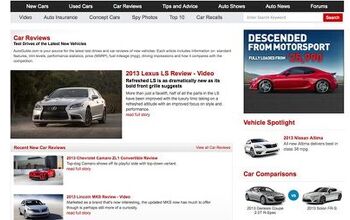
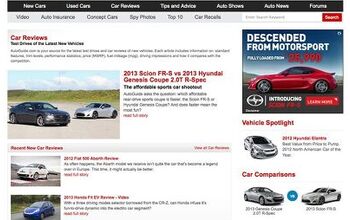
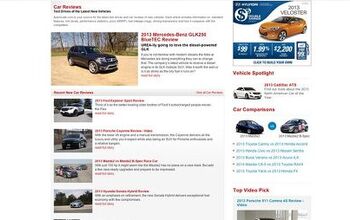
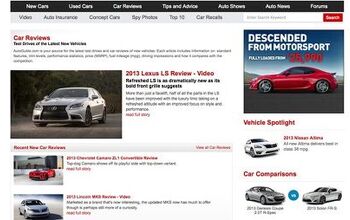
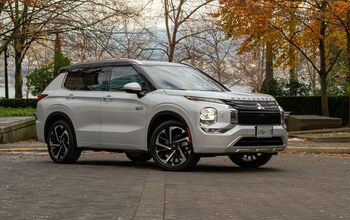
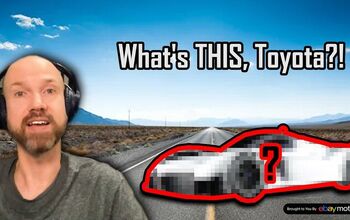


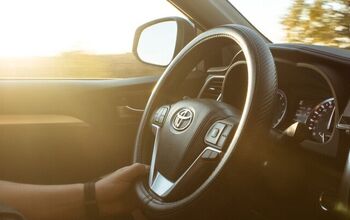
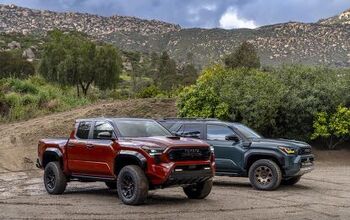



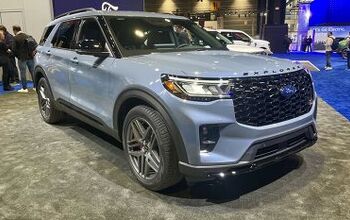

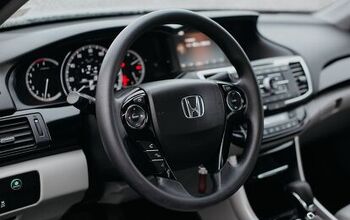
Comments
Join the conversation